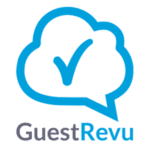 Understanding your guests is the key to success in the ever-evolving hospitality industry. It’s not always about filling every room every night; it’s about attracting and retaining guests who bring the most value to your hotel. These guests spend more during their stay and return time and again, becoming ambassadors for your brand and spreading the word to their networks.
Understanding your guests is the key to success in the ever-evolving hospitality industry. It’s not always about filling every room every night; it’s about attracting and retaining guests who bring the most value to your hotel. These guests spend more during their stay and return time and again, becoming ambassadors for your brand and spreading the word to their networks.
But how do you identify these “VIP guests” within your clientele? Is it as simple as looking at who pays the highest room rate, or is there more to the story? This post will guide you through finding your most profitable guests. We’ll explore crucial metrics and effective strategies and provide actionable insights to help you enhance your guest strategy. From understanding the importance of guest segmentation to learning about guest lifetime value, we will delve into various aspects that will help you identify and nurture your most profitable guests. By the end of this post, you’ll have the knowledge and tools you need to increase your profitability, one guest at a time.
Defining profitability in the hotel industry
In the hotel industry, understanding profitability goes beyond just total revenue—it’s crucial to consider the costs associated with acquiring and serving each guest. In this context, when we refer to a ‘profitable’ guest, we mean a guest whose value to the hotel, throughout their relationship, exceeds the total costs of acquiring them and providing their services.
Let’s break down the three key components to understand this concept better.
- Revenue: This is the total income your hotel earns from a guest. It includes the room charges and any additional spending the guest does during their stay, like dining at the hotel restaurant, using the spa services, minibar purchases, etc.
- Customer Acquisition Cost (CAC): This is the total cost of attracting a guest to your hotel. It includes all marketing and advertising expenses, sales team efforts, and other costs of bringing in new guests.
- Cost of Goods Sold (COGS): In the hotel industry, this refers to the variable costs directly associated with serving a guest. These costs increase with each additional guest and can include housekeeping, laundry, utilities, and any other services the guest uses during their stay.
Given these components, we can define the marginal profit from a guest as their total revenue minus the CAC and COGS. This profit metric gives you a more nuanced understanding of your profitability, as it considers the income generated by a guest and the specific costs associated with serving them.
By grasping this concept of profitability, you’re on the right track to optimizing your operations and marketing efforts. The goal is to focus on attracting and retaining more of your most profitable guests—those who provide the highest marginal profit.
A hierarchical approach to guest segmentation
Segmenting your guests based on shared characteristics is crucial to understand their profitability. However, not all segmentation variables are created equal. Some provide more insight into a guest’s spending behavior and profitability potential than others. A hierarchical approach to segmentation can help you understand these differences and focus your efforts where they will have the most impact.
Let’s look at the four levels of segmentation variables you’ve mentioned:
- Reason for Travel: This is the highest level in our segmentation hierarchy. The reason for travel often dictates the nature of a guest’s stay and spending behavior. For instance, guests traveling for leisure might be more likely to use your spa services, while business travelers might spend more on dining or meeting facilities. Understanding why guests visit your area allows you to cater your offerings and marketing messages to their needs and interests, increasing the likelihood of attracting high-spending guests.
- Travel Distance: The second level considers the geographical origin of your guests. Those traveling from further away might stay longer and spend more during their stay to maximize their trip. Meanwhile, local or regional guests might visit more frequently for shorter stays. By tailoring your marketing and service offerings to the unique needs of each group, you can enhance their experience and, in turn, their spending.
- Booking Method: The third level looks at how guests book their stay. This could be through an online travel agency (OTA), a travel agent, or directly with the hotel. Each method has different implications for your hotel’s profitability due to differences in commission costs and opportunities for upselling or personalization. For example, guests who book directly might have a higher profit margin due to lower acquisition costs and greater direct communication and upselling opportunities.
- Room Type and Additional Services: The final level considers what guests purchase during their stay. The type of room a guest chooses can strongly indicate their spending potential, as guests who opt for higher-end rooms may also be more likely to spend on services like dining, spa treatments, and more. Understanding these purchasing patterns can help you identify your most profitable guests and tailor your marketing and service offerings to attract more guests like them.
By segmenting your guests according to this hierarchy, you can gain a nuanced understanding of their behaviors, needs, and profitability potential. This information is invaluable for developing targeted marketing strategies and service offerings that attract high-spending guests, improve satisfaction, and ultimately enhance your hotel’s profitability.
Guest segmentation and profitability
As we’ve discussed, not all guests bring the same level of profitability to your hotel. Some might spend more on additional services, some stay longer, and others book more frequently. The goal is to identify patterns and trends that can inform your marketing strategies and operational decisions.
Why is segmentation so crucial for understanding profitability? Let’s consider an example. Suppose you have one guest who stays often but always books the cheapest room and spends little on additional services and another who stays less frequently but always books a suite and uses many of your hotel’s services. If you were to look at the number of bookings, the first guest might seem more valuable. But the second guest might be more profitable once you consider revenue and costs. Segmentation helps you to see these nuances.
By segmenting your guests, you can
- Identify Your Most Profitable Segments: Not all segments will be equally profitable. By analyzing revenue, CAC, and COGS for each segment, you can identify which ones bring the most value to your hotel.
- Tailor Your Marketing Efforts: Different segments may respond to different marketing strategies. By understanding what makes each segment unique, you can tailor your marketing to attract more guests like your most profitable ones.
- Optimize Your Service Offerings: Understanding the preferences and behaviors of your most profitable segments can help you decide where to invest in improvements or new services.
- Improve Guest Satisfaction and Retention: When you understand your guests’ needs and preferences, you can provide a more personalized experience that increases satisfaction and loyalty, further enhancing profitability.
KPI for profitability: customer lifetime value
When assessing the profitability of your guests, one crucial metric stands out: Customer Lifetime Value (CLV). In the hotel industry context, CLV represents the total net profit a hotel expects to earn from a guest over their relationship.
The CLV of a hotel guest takes into account not just the revenue from room bookings but also the additional income generated from other services such as dining, spa treatments, and event bookings. Additionally, it considers the frequency and length of the guest’s stays and the likelihood of the guest returning in the future.
The CLV subtracts the costs of acquiring and serving the guest. This includes the Customer Acquisition Cost (CAC), which encompasses marketing and sales expenses, and the Cost of Goods Sold (COGS), which includes variable costs directly associated with serving the guest, such as housekeeping and utilities.
Here’s a simplified formula for CLV:
CLV = (Average Spend per Visit x Frequency of Visits per Year x Average Number of Years the Guest Stays with the Hotel) – (CAC + COGS)
By focusing on CLV, hoteliers can identify the guests that bring the most value to their establishment in the long run. These high-CLV guests are the ones that hotels should strive to attract and retain, as they contribute most significantly to the hotel’s profitability.
Tools and techniques for identifying profitable guests
Three critical systems will be your primary resources in identifying your most profitable guests. Each system provides unique insights into your guests’ behavior and preferences, enabling you to calculate Customer Lifetime Value (CLV) and develop targeted strategies to attract and retain high-CLV guests.
- Hotel Property Management System (PMS): The PMS is the backbone of hotel operations, housing crucial data about your guests, including their booking history and spending habits. A robust PMS and a solid commitment to maintaining high-quality data allow you to analyze this information to calculate CLV and segment your guests based on profitability.
- Marketing Automation Tools: These tools streamline and automate your marketing efforts, making it easier to target specific guest segments with personalized offers. Additionally, they can assist in upselling during various stages of the guest journey, further increasing the potential revenue from each guest. By optimizing your marketing and upselling strategies, you can attract and retain more high-CLV guests.
- Guest Feedback and Reviews: Insights from online reviews and direct feedback are invaluable in understanding what guests value most about your hotel. This information can guide improvements to your offerings and enhance overall guest satisfaction, which can, in turn, increase CLV.
Remember, these tools help you identify your most profitable guests and understand why they are profitable. This understanding is critical in shaping your strategies to attract and retain similar high-CLV guests.
Attracting and retaining profitable guests
Identifying your most profitable guests is only the first step. The next challenge is to attract more guests like them and ensure their loyalty to your hotel. Here are some strategies that can help you achieve these goals.
- Personalization: Use the data from your PMS and Marketing Automation Tools to personalize your interactions with each guest. This could involve sending tailored offers based on a guest’s previous spending habits or personalizing the guest’s experience at your hotel based on their preferences. High-value guests often value these personalized experiences, enhancing their satisfaction and encouraging repeat bookings.
- Exclusive Loyalty Programs: Consider offering your most profitable guests exclusive benefits through a loyalty program. This could involve access to exclusive events or amenities, priority service, or free upgrades. Such programs incentivize repeat bookings and can help you build a community of loyal, high-CLV guests.
- Targeted Marketing: Use the data from your PMS and Marketing Automation Tools to develop targeted marketing campaigns to attract high-CLV guests. This could involve promoting specific services or amenities that these guests value or targeting guests from a particular geographical area or demographic.
- Upselling and Cross-Selling: Look for opportunities to upsell or cross-sell services to your guests during their stay. This increases revenue and enhances the guest’s experience if the additional services or products align with their needs and interests.
- Regular Engagement with High-Value Guests: Maintaining regular contact with your high-CLV guests keeps your hotel top of mind and fosters a sense of exclusivity and appreciation. This could involve sending regular newsletters, updates about your hotel or destination, or personalized messages on special occasions. Importantly, this communication should target your high-spending guests to avoid displacing them with lower-spending guests.
By implementing these strategies, you can attract more high-CLV guests to your hotel and ensure their continued loyalty. Remember, the goal is to increase bookings and build long-term relationships with your guests, resulting in consistent, high-value revenue for your hotel.
Measuring success and adjusting strategies
Implementing strategies to attract and retain high-CLV guests is only part of the journey. Equally important is measuring the success of these strategies and making necessary adjustments to ensure continuous improvement and maximization of profitability. Here’s how you can do it:
- Track Key Performance Indicators (KPIs): Certain KPIs can provide insight into the effectiveness of your strategies. These may include the average revenue per booking, the number of repeat bookings, the rate of upsells and cross-sells, and the growth of your loyalty program. By regularly monitoring these KPIs, you can understand which strategies are working and which may need adjustment.
- Analyze Guest Feedback: Regularly review feedback from your high-CLV guests. Are they satisfied with their experience at your hotel? Do they appreciate the personalized experiences and exclusive benefits? Are there any areas they feel could be improved? This feedback can help you fine-tune your strategies to better meet the needs and expectations of your most profitable guests.
- Test and Learn: Consider running small-scale tests of new strategies or adjustments to existing ones. This could involve testing a new upsell offer, loyalty program benefit, or personalization tactic. Analyze the results of these tests to inform your broader strategy.
- Stay Current: The hospitality industry is dynamic, and guest preferences can change over time. Regularly review industry trends and advancements, and be prepared to adjust your strategies to stay ahead of the curve.
Remember, the ultimate goal is to attract and retain high-CLV guests and continually enhance their satisfaction and profitability. This requires a commitment to regular measurement, analysis, and adjustment of your strategies. With these practices in place, you can ensure that your hotel is always attracting the right guests and offering them the best possible experience, leading to long-term, high-value relationships that drive your hotel’s profitability.




















